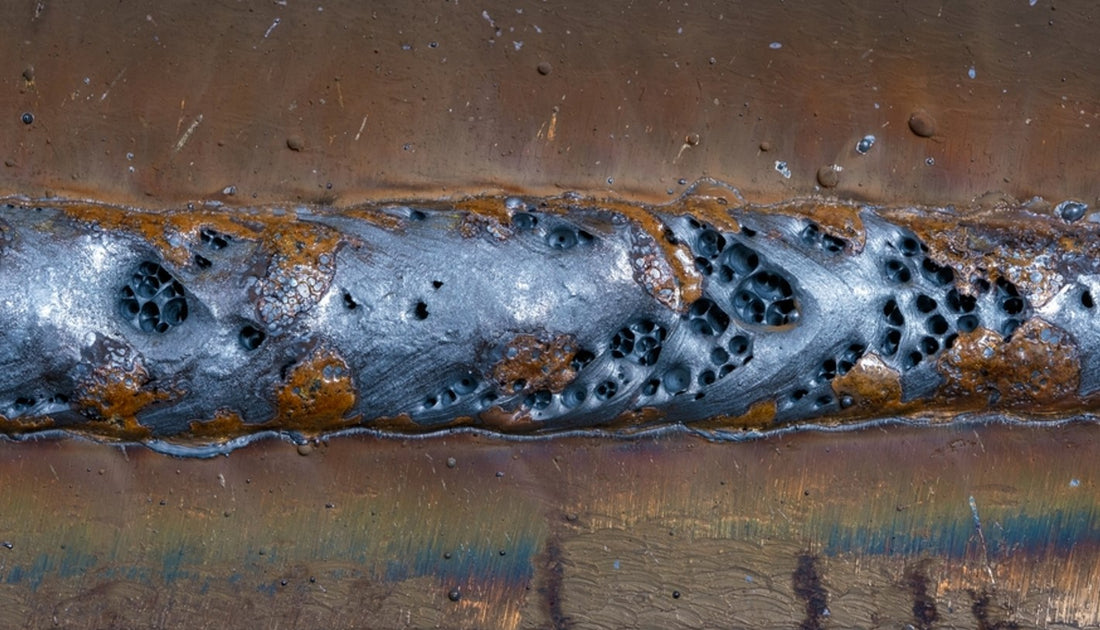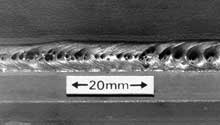Comprehending Porosity in Welding: Exploring Reasons, Results, and Avoidance Strategies
Porosity in welding is a consistent challenge that can substantially influence the top quality and honesty of welds. As specialists in the welding market are cognizant, understanding the reasons, effects, and avoidance methods associated to porosity is vital for accomplishing robust and reputable welds. By delving into the origin creates of porosity, examining its detrimental effects on weld top quality, and discovering efficient avoidance techniques, welders can enhance their expertise and skills to create top notch welds constantly. The intricate interplay of elements contributing to porosity calls for a thorough understanding and an aggressive strategy to make sure successful welding end results.
Common Reasons of Porosity
Contamination, in the type of dirt, grease, or rust on the welding surface area, creates gas pockets when warmed, leading to porosity in the weld. Inappropriate shielding takes place when the shielding gas, commonly utilized in procedures like MIG and TIG welding, is unable to totally protect the molten weld pool from responding with the surrounding air, resulting in gas entrapment and subsequent porosity. Furthermore, insufficient gas protection, commonly due to inaccurate flow rates or nozzle positioning, can leave components of the weld unprotected, enabling porosity to create.
Results on Weld Quality
The existence of porosity in a weld can considerably jeopardize the total quality and honesty of the bonded joint. Porosity within a weld develops gaps or tooth cavities that compromise the structure, making it a lot more vulnerable to fracturing, rust, and mechanical failing.
In addition, porosity can prevent the efficiency of non-destructive screening (NDT) techniques, making it testing to detect other flaws or stoppages within the weld. This can lead to substantial security issues, especially in important applications where the architectural honesty of the bonded parts is extremely important.

Avoidance Techniques Overview
Given the detrimental impact of porosity on weld top quality, effective prevention techniques are essential to maintaining the structural honesty of bonded joints. One of the main prevention methods is extensive cleaning of the base products before welding. Contaminants such as oil, oil, rust, and dampness can add to porosity, so making sure a clean work surface is necessary. Proper storage of welding consumables in completely dry problems is likewise essential to stop dampness absorption, which can cause gas entrapment during welding. In addition, choosing the suitable welding criteria, such as voltage, current, and take a trip rate, can help reduce the threat of porosity development. Guaranteeing appropriate shielding gas flow and protection is one more critical avoidance method, as inadequate gas insurance coverage can result in atmospheric contamination and porosity. Ultimately, appropriate welder training and certification are essential for applying safety nets properly and regularly. By incorporating these prevention techniques into click now welding practices, the occurrence of porosity can be substantially reduced, causing stronger and a lot more trustworthy bonded joints.
Significance of Appropriate Protecting
Correct securing in welding plays a critical role in avoiding atmospheric contamination and making certain the stability of bonded joints. Securing gases, such as argon, helium, or a combination of both, are generally utilized to protect the weld pool from reacting with aspects in the air like oxygen and nitrogen. When these reactive elements enter into call with the hot weld pool, they can cause best site porosity, resulting in weak welds with minimized mechanical buildings.

Inadequate shielding can result in numerous issues like porosity, spatter, and oxidation, compromising the structural honesty of the bonded joint. As a result, sticking to appropriate protecting techniques is vital to produce top quality welds with marginal defects and make sure the long life and reliability of the welded parts (What is Porosity).
Monitoring and Control Approaches
Exactly how can welders efficiently keep an eye on and manage the welding process to make certain optimal outcomes and prevent issues like porosity? By constantly keeping an eye on these variables, welders can recognize variances from the ideal problems and make instant adjustments to prevent porosity formation.

In addition, implementing correct training programs for welders is important for checking and managing the welding procedure effectively. What is Porosity. Informing welders on the value of preserving constant specifications, such as correct gas securing and take a trip imp source speed, can aid stop porosity concerns. Regular analyses and qualifications can likewise make sure that welders are skilled in monitoring and managing welding processes
Additionally, making use of automated welding systems can enhance tracking and control capabilities. These systems can specifically manage welding criteria, minimizing the possibility of human error and making sure regular weld quality. By incorporating advanced monitoring modern technologies, training programs, and automated systems, welders can effectively check and control the welding process to minimize porosity issues and attain high-grade welds.
Conclusion
